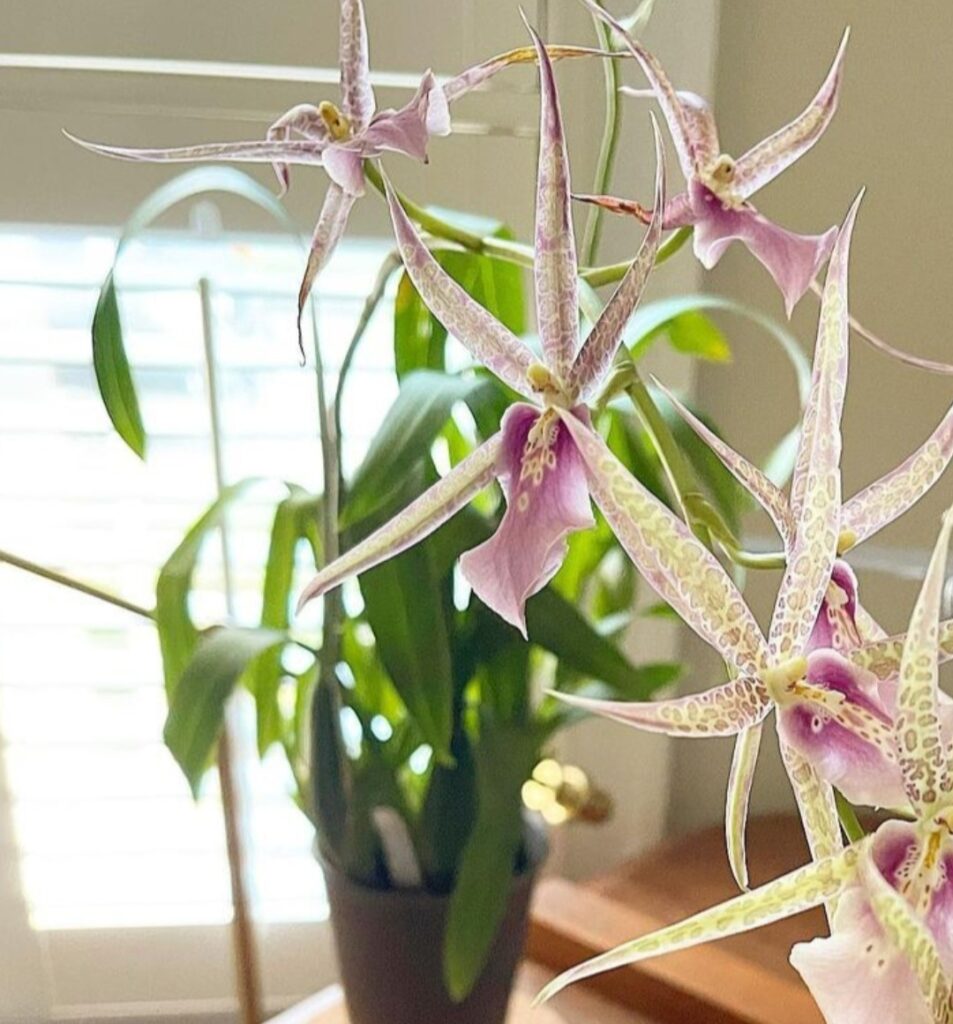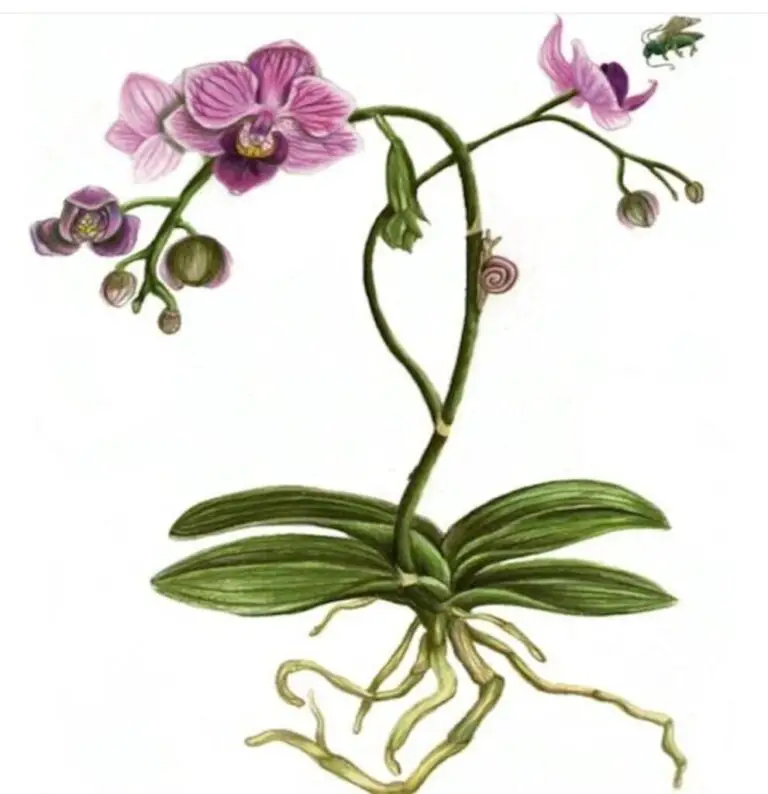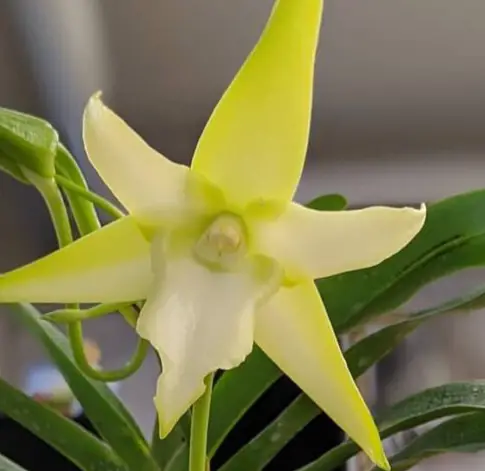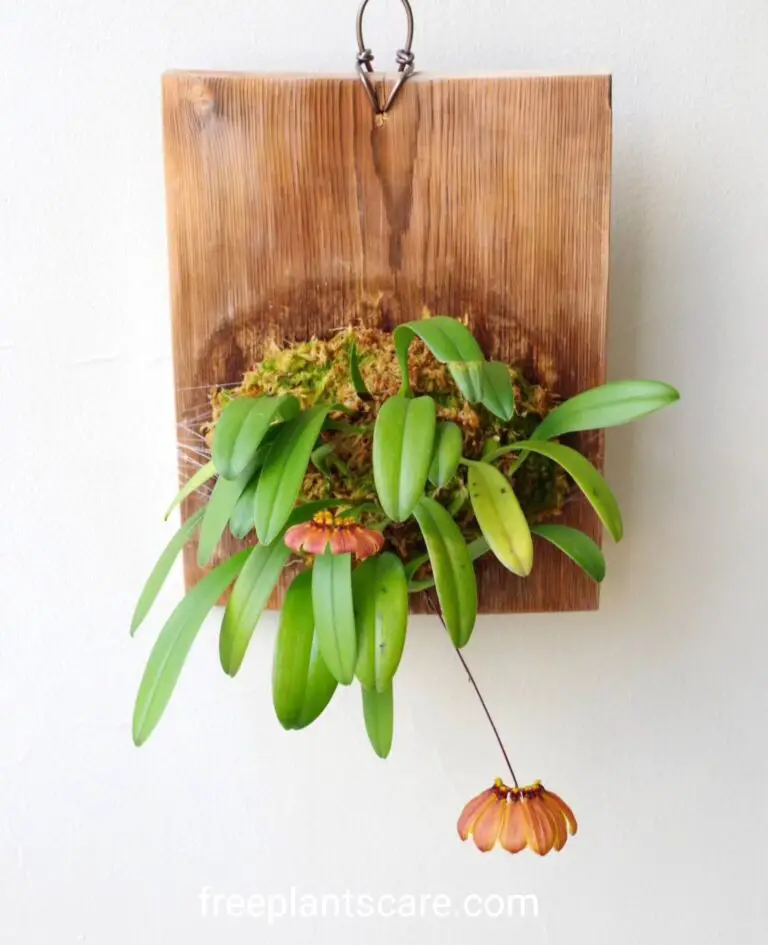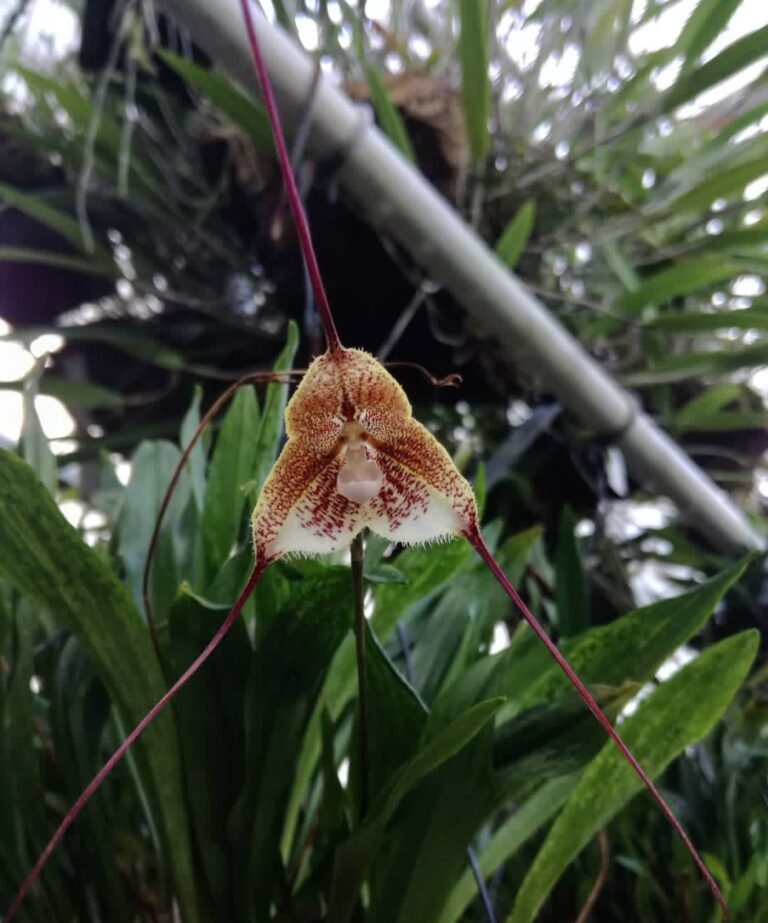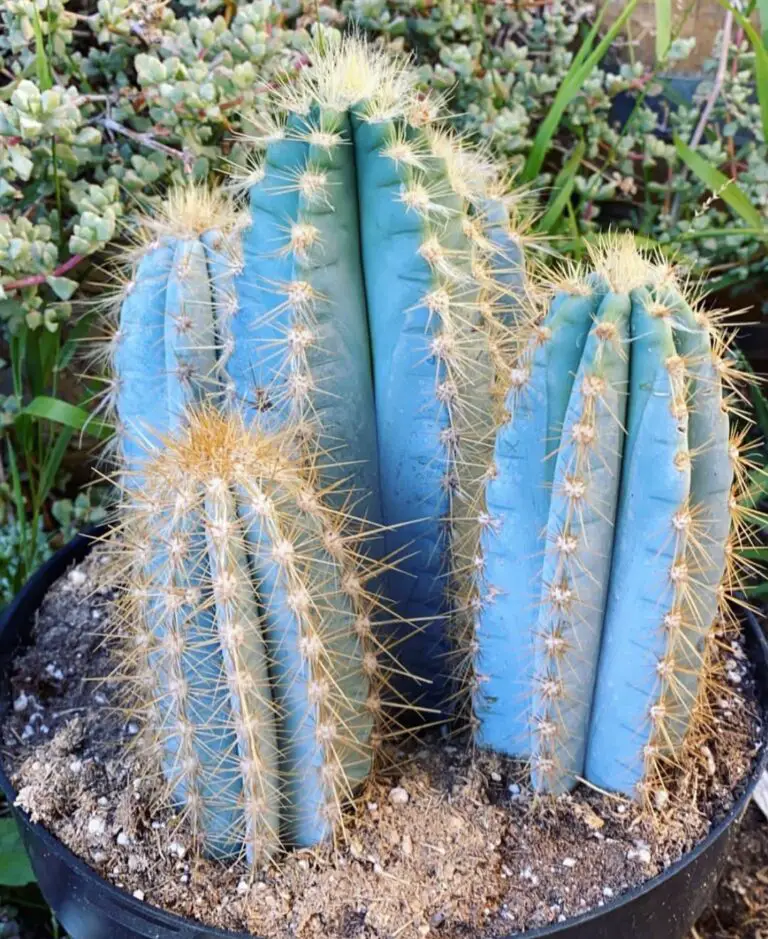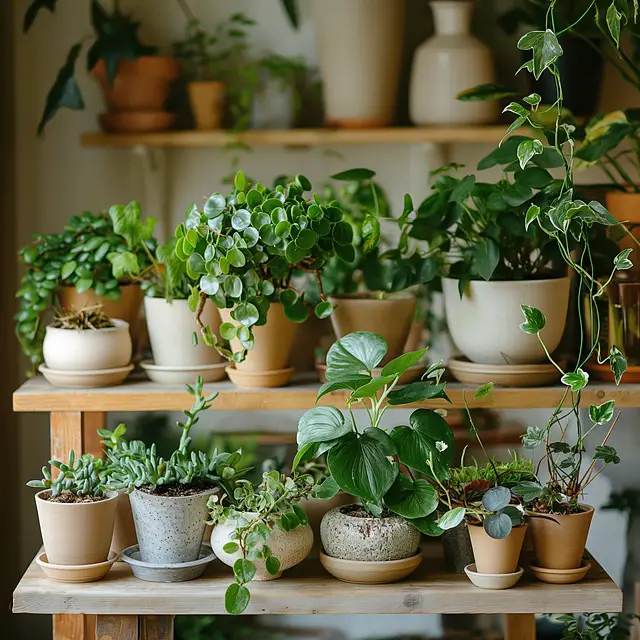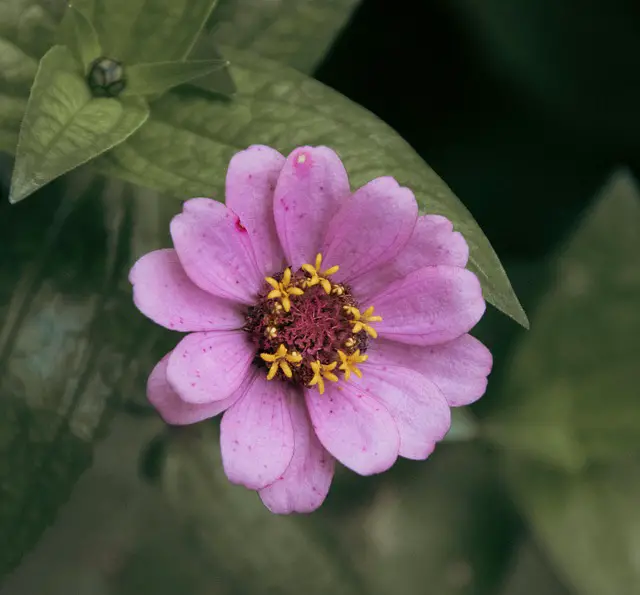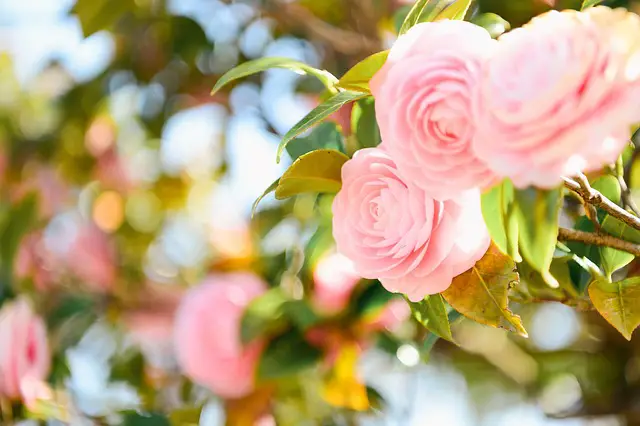Orchids, with their breathtaking beauty and captivating allure, have long fascinated enthusiasts around the world. Among the myriad of orchid varieties, one name stands out: Miltassia Charles M. Fitch+. Renowned for its striking appearance and delicate fragrance, this hybrid orchid has garnered a dedicated following among growers and collectors alike.
In this blog post, we delve into the world of Miltassia Charles M. Fitch+ and uncover the top 10 expert tips for orchid enthusiasts looking to cultivate these magnificent blooms.
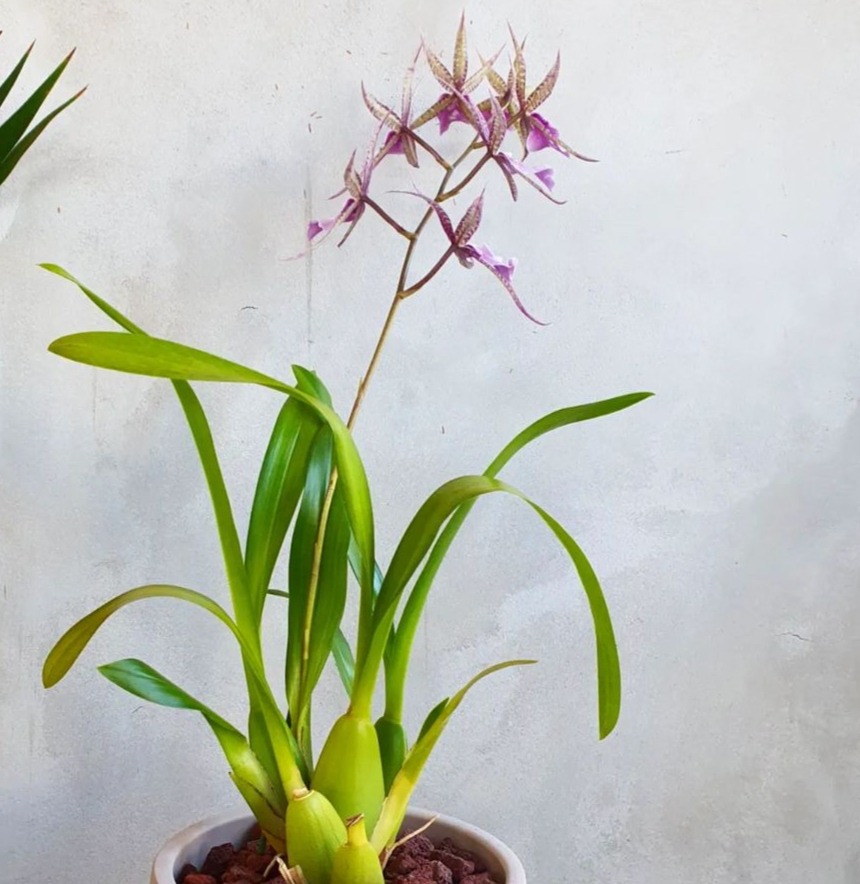
- 1 Understand its origins:
- 2 Provide optimal lighting.
- 3 Maintain Proper Humidity Levels:
- 4 Choose the right potting medium:
- 5 Maintain adequate air circulation.
- 6 Fertilisers that are good
- 7 Monitor temperature fluctuations:
- 8 Prune and repot as needed.
- 9 Repotting:
- 10 Winter care for this orchid
- 11 FAQ
Understand its origins:
Understanding the origins of Miltassia Charles M. Fitch+ is essential for appreciating its unique characteristics and meeting its specific care needs. Miltassia Charles M. Fitch+ is a hybrid orchid, which means it is a crossbreed of multiple orchid species. The name “Miltassia” itself is a combination of two orchid genera, Miltonia and Brassia, reflecting its complex lineage.
Miltonia orchids, also known as pansy orchids, contribute to Miltassia’s stunning floral display with their large, flat, and often fragrant flowers. Brassia orchids, commonly known as spider orchids due to their long, spidery petals, impart Miltassia with their distinctive shape and unique appearance.
The specific parentage of Miltassia Charles M. Fitch+ may vary depending on the individual hybridization process. However, it typically involves crossing selected varieties of Miltonia and Brassia orchids to achieve desired traits such as flower colour, size, shape, and fragrance.
By understanding the origins of Miltassia Charles M. Fitch+, orchid enthusiasts can gain insights into its genetic makeup and better tailor their care regimen to ensure its health and vitality. Additionally, appreciating the intricate breeding process behind this hybrid orchid adds to the fascination and appreciation for its beauty.
Provide optimal lighting.
Providing optimal lighting is crucial for the health and blooming of Miltassia Charles M. Fitch+ orchids. These orchids thrive in bright, indirect light, similar to their parent species, Miltonia and Brassia. Here are some tips to ensure they receive the right amount of light:
Indirect Sunlight: Place your Miltassia Charles M. Fitch+ orchids in a location where they can receive bright, indirect sunlight. Direct sunlight can scorch their delicate leaves, so it’s best to filter sunlight through a sheer curtain or place them a few feet away from south- or west-facing windows.
Avoid Harsh Midday Sun: While orchids require ample light, intense midday sun can be too harsh. If placing them near windows, ensure they are shielded from direct sunlight during the hottest part of the day.
Monitor Light Intensity: Orchids are adaptable, but it’s essential to monitor the intensity of light they receive. If leaves appear pale or yellowish, it may indicate they are receiving too much light. Conversely, if leaves appear dark green and elongated, they may need more light.
Rotate Occasionally:Make sure you rotate your orchid pots frequently to prevent uneven growth and encourage uniform development. The plant now receives equal light exposure from all directions.
Supplement with Grow Lights: In low-light environments or during the winter months when natural light is limited, consider supplementing with artificial grow lights specifically designed for orchids. LED grow lights are energy-efficient and provide the full spectrum of light needed for healthy orchid growth.
By providing optimal lighting conditions, you can encourage robust growth and prolific blooming in your Miltassia Charles M. Fitch+ orchids, allowing you to enjoy their stunning flowers to the fullest.
Maintain Proper Humidity Levels:
Maintaining proper humidity levels is essential for the health and thriving of Miltassia Charles M. Fitch+ orchids, as they are native to tropical regions and require a humid environment to flourish. Here are some tips to ensure adequate humidity for your orchids:
Use a Humidity Tray: Place your orchid pots on top of a humidity tray filled with water and pebbles. As the water evaporates, it increases the humidity around the plants.
Grouping Orchids Together: Grouping several orchids together can create a microclimate of increased humidity around the plants. Just be sure to provide adequate airflow to prevent fungal issues.
Use a Room Humidifier: If you live in a dry climate or your indoor environment lacks humidity, consider using a room humidifier to maintain optimal moisture levels. This is especially beneficial during the winter months, when indoor heating can reduce humidity levels.
Mist Orchids Regularly: Mist your orchids with water using a spray bottle, especially during hot and dry weather. Be sure to mist early in the day to allow foliage to dry before evening, as wet leaves overnight can encourage fungal diseases.
Avoid Drafts and Dry Air: Keep your orchids away from draughty windows, heating vents, and air conditioning units, as these can create dry air that depletes humidity levels.
Monitor Humidity Levels: Invest in a digital hygrometer to monitor humidity levels around your orchids. Aim for humidity levels between 50 and 70% for optimal growth.
By maintaining proper humidity levels, you can create a favourable environment for your Miltassia Charles M. Fitch+ orchids, promoting healthy growth, lush foliage, and abundant flowering.
Choose the right potting medium:
Choosing the right potting medium is crucial for the health and well-being of Miltassia Charles M. Fitch+ orchids, as it directly impacts their root health, water retention, and overall growth. Here are some tips for selecting the ideal potting medium:
Well-Draining Mix: Miltassia Charles M. Fitch+ orchids prefer a potting mix that provides excellent drainage to prevent waterlogged roots. Look for orchid-specific potting mixes that contain materials like bark, sphagnum moss, perlite, and coconut coir. These components promote aeration and allow excess water to drain freely.
Avoid Regular Potting Soil: Standard potting soil retains too much moisture and compacts over time, leading to the suffocation of orchid roots. Avoid using regular potting soil for Miltassia Charles M. Fitch+ orchids.
Consider Orchid Bark: Orchid bark is a popular choice for orchid growers due to its excellent drainage properties and ability to mimic the orchid’s natural growing environment. It comes in various sizes, so choose a medium-grade bark that balances water retention with aeration.
Include Sphagnum Moss: Sphagnum moss retains moisture while still allowing air circulation around the roots. Incorporating sphagnum moss into the potting mix can help maintain consistent moisture levels without suffocating the roots.
Perlite for Aeration: Perlite is a lightweight volcanic mineral that helps aerate the potting mix and prevent compaction. Its porous structure improves drainage and allows oxygen to reach the roots.
Coconut Coir as an Alternative: Coconut coir, derived from the husks of coconuts, is another excellent option for orchid potting medium. It retains moisture well, promotes aeration, and is environmentally friendly.
Pre-Packaged Orchid Mixes: Many garden centres and orchid suppliers offer pre-packaged orchid mixes tailored to the specific needs of orchids, like Miltassia Charles M. Fitch+. These mixes often contain a combination of bark, sphagnum moss, perlite, and other ingredients optimised for orchid growth.
When repotting or transplanting Miltassia Charles M. Fitch+ orchids, ensure the potting medium is fresh and free from pests or diseases. By choosing the right potting medium, you can create an optimal growing environment for your orchids, promoting healthy root development and vibrant blooms.
Maintain adequate air circulation.
Maintaining adequate air circulation is essential for the health and vitality of Miltassia Charles M. Fitch+ orchids. Proper airflow helps prevent stagnant conditions that can lead to fungal diseases and encourage healthy growth. Here are some tips to ensure sufficient air circulation for your orchids:
Positioning: Place your Miltassia Charles M. Fitch+ orchids in a location with good air circulation, avoiding areas with stagnant air or poor ventilation. Avoid overcrowding plants, as this can impede airflow around the foliage.
Use Fans: Install oscillating fans or small tabletop fans near your orchid displays to promote air movement. Set them on a low setting to prevent excessive drying of the foliage, and aim the airflow to gently circulate around the plants.
Open Windows and Doors: When weather permits, open windows and doors to allow fresh air to circulate throughout your indoor space. This not only benefits your orchids but also improves the overall air quality in your home.
Avoid Still Air Pockets: Arrange furniture and decor to prevent the formation of still air pockets around your orchids. Pay attention to corners and areas behind large objects where air may stagnate.
Prune and Thin Foliage: Regularly prune dead or yellowing leaves and thin out dense foliage to improve air circulation within the plant canopy. This allows air to flow freely around individual leaves and stems, reducing the risk of disease.
Monitor Humidity Levels: High humidity levels combined with poor air circulation can create conditions conducive to fungal growth. Use a hygrometer to monitor humidity levels and adjust airflow as needed to maintain optimal conditions.
Avoid drafts: While airflow is essential, avoid placing orchids in direct drafts from air conditioning vents or windows. Sudden temperature fluctuations can stress orchids and make them more susceptible to damage.
By implementing these measures to maintain adequate air circulation, you can create a healthier growing environment for your Miltassia Charles M. Fitch+ orchids, reducing the risk of disease and promoting vigorous growth and blooming.
Fertilisers that are good
When it comes to fertilising Miltassia Charles M. Fitch+ orchids, choosing the right fertiliser is crucial for promoting healthy growth and vibrant blooms. Here are some types of fertilisers that are suitable for orchids:
Balanced Orchid Fertiliser: Look for a balanced orchid fertiliser with equal parts nitrogen (N), phosphorus (P), and potassium (K), such as 20-20-20 or 10-10-10. This balanced formula provides essential nutrients for overall growth, foliage development, and flowering.
Water-Soluble Fertilizer: Water-soluble fertilizers are convenient and easy to use, as they can be dissolved in water and applied to orchids during regular watering. Choose a fertilizer specifically formulated for orchids, as these products contain the appropriate micronutrients and are less likely to cause fertilizer burn.
Slow-Release Fertiliser: Slow-release fertilisers, also known as granular or pelletized fertilisers, provide a steady supply of nutrients to orchids over an extended period of time. These fertilisers are applied to the potting mix and gradually release nutrients as they break down, reducing the risk of overfertilization.
Organic Fertilisers: Organic fertilisers derived from natural sources, such as fish emulsion, seaweed extract, or compost tea, can be beneficial for orchids. These products enrich the soil with organic matter and micronutrients, promoting soil health and microbial activity.
Liquid Seaweed Fertiliser: Liquid seaweed fertiliser is rich in trace minerals, amino acids, and growth hormones that can enhance orchid growth and resilience. It is often used as a supplement to traditional fertilizers to provide additional micronutrients and promote overall plant health.
Low-Urea Fertilisers: Orchids are sensitive to high levels of urea, so choose fertilisers with a low urea content or opt for urea-free formulations to prevent fertiliser burn and root damage.
Dilute and Apply Sparingly: Regardless of the type of fertiliser you choose, always follow the manufacturer’s instructions for dilution and application rates. It’s best to err on the side of caution and apply fertiliser at half strength to avoid over-fertilising, which can lead to salt buildup and damage to the orchid roots.
By selecting a suitable fertiliser and applying it correctly, you can provide Miltassia Charles M. Fitch+ orchids with the nutrients they need to thrive, ensuring robust growth, lush foliage, and stunning blooms.
Monitor temperature fluctuations:
Monitoring temperature fluctuations is essential for the health and well-being of Miltassia Charles M. Fitch+ orchids, as they are sensitive to changes in temperature. Here are some tips to help you manage temperature variations and create a stable environment for your orchids:
Know the Ideal Temperature Range: Miltassia Charles M. Fitch+ orchids thrive in temperatures ranging from 60°F to 80°F (15°C to 27°C) during the day and slightly cooler temperatures at night. It’s essential to maintain temperatures within this range to promote healthy growth and flowering.
Avoid Extreme Temperatures: Orchids are sensitive to extreme temperatures, so avoid exposing them to sudden temperature spikes or prolonged exposure to heat or cold. Keep orchids away from draughty windows, heating vents, and air conditioning units that can cause rapid temperature fluctuations.
Protect from Frost: Miltassia Charles M. Fitch+ orchids are tropical plants and cannot tolerate frost or freezing temperatures. If growing outdoors in a temperate climate, bring orchids indoors before the onset of cold weather or provide adequate protection, such as a greenhouse or cold frame, during the winter months.
Monitor Indoor Temperatures: Use a thermometer to monitor indoor temperatures regularly, especially during the winter when indoor heating systems can cause fluctuations. Position orchids away from heat sources and drafts to maintain stable temperatures.
Use Temperature-Controlled Environments: In regions with extreme climates, consider using temperature-controlled environments such as greenhouses or indoor growing areas equipped with thermostats, heaters, or fans to regulate temperature fluctuations.
Provide Adequate Ventilation: Proper ventilation helps regulate temperature and humidity levels and prevents the buildup of heat around orchids. Use fans or open windows to promote airflow and maintain a comfortable environment for your orchids.
Observe Orchid Response: Monitor your Miltassia Charles M. Fitch+ orchids closely for signs of stress or damage caused by temperature fluctuations. Symptoms may include wilting, yellowing leaves, or bud blast (dropping of flower buds). Adjust environmental conditions accordingly to minimise stress on the plants.
By carefully monitoring temperature fluctuations and taking proactive measures to create a stable environment, you can help your Miltassia Charles M. Fitch+ orchids thrive and flourish, rewarding you with beautiful blooms and healthy foliage.
Prune and repot as needed.
Pruning and repotting are essential tasks for maintaining the health and vitality of Miltassia Charles M. Fitch+ orchids. Here’s a guide on when and how to prune and repot your orchids as needed:
Pruning
Remove Dead or Yellowing Leaves:Check your orchid frequently for yellowed, damaged, or dead leaves. Trim any diseased foliage gently with sterile pruning shears. This stops illnesses from spreading while also enhancing the beauty of the plant.
Trim Spent Flower Spikes: After your Miltassia Charles M. Fitch+ orchid has finished blooming, trim the spent flower spikes to the base using sharp, sterile scissors. This encourages the plant to redirect energy towards new growth and flowering.
Cut Back Overgrown Roots: If your orchid has become root-bound or has roots growing outside of the pot, it may be necessary to trim back some of the roots during repotting. Use sterilised scissors to carefully trim away any dead or excessively long roots, making clean cuts to avoid damaging the plant.
Repotting:
Check for Signs of Overcrowding: Monitor your orchid for signs that it has outgrown its pot, such as roots growing over the edge or crowded conditions within the pot. Repotting is typically needed every 1-2 years, depending on the growth rate of your orchid.
Choose the Right Time: The best time to repot Miltassia Charles M. Fitch+ orchids is during the growing season in spring or early summer, when the plant is actively producing new growth. Avoid repotting while the orchid is in bloom or during periods of stress, such as extreme heat or cold.
Select a Suitable Pot: Choose a new pot that is slightly larger than the current one and has ample drainage holes. Orchids prefer pots with good airflow and drainage to prevent waterlogging.
Prepare the Potting Mix:Use a potting mix for orchids that drains well and contains ingredients like charcoal, sphagnum moss, perlite, and bark. Before repotting, soak the potting mix in water for a few hours to make sure it is thoroughly saturated.
Carefully Remove the Orchid: Gently remove the orchid from its current pot, taking care not to damage the roots. If the roots are tightly packed, you may need to gently loosen them with your fingers or a sterilized tool.
Repot the Orchid: Place the orchid in the centre of the new pot and fill in around the roots with fresh potting mix, making sure to support the plant securely. Avoid burying the orchid too deeply, and leave some space at the top of the pot for watering.
Water and Care for the Orchid: Once the orchid has been replanted, give it plenty of water and set it somewhere with the right amount of light and temperature. For a few weeks, refrain from fertilising the plant to give it time to acclimatise to its new surroundings.
By pruning dead or overgrown foliage and repotting as needed, you can ensure that your Miltassia Charles M. Fitch+ orchids have ample space to grow and thrive, leading to healthier plants and more abundant blooms.
Winter care for this orchid
Winter care for Miltassia Charles M. Fitch+ orchids is essential to ensure their health and well-being during the colder months when environmental conditions can be less than ideal for tropical plants. Here are some tips to help you care for your orchids during the winter:
Monitor Temperature:To protect your orchids from chilly drafts and temperature swings, keep them away from draughty windows, doors, and heating vents. Temperatures between 60°F and 80°F (15°C and 27°C) during the day and somewhat colder at night are ideal for orchids.
Provide Adequate Light: While daylight hours may be shorter during the winter, it’s essential to provide your orchids with sufficient light. Place them near a south or east-facing window where they can receive bright, indirect sunlight. If natural light is limited, supplement with artificial grow lights to ensure they receive the necessary light for healthy growth.
Maintain Humidity: Indoor heating systems can lead to dry air, which can be detrimental to orchids that thrive in humid conditions. Increase humidity levels around your orchids by using a humidity tray filled with water and pebbles or by using a room humidifier. Mist your orchids regularly to provide additional moisture to the air around them.
Water Carefully: Adjust your watering schedule to account for the lower light and temperature levels during the winter. Allow the top layer of the potting mix to dry out slightly between waterings, but be mindful not to let the roots dry out completely. Water your orchids in the morning to allow excess moisture to evaporate before temperatures drop at night.
Avoid overfeeding: Orchids typically experience slower growth during the winter months, so it’s essential to adjust your fertilising schedule accordingly. Reduce the frequency of fertilisation or use a diluted fertiliser to avoid overfeeding, which can lead to salt buildup and root damage.
Protect from Frost: If you grow your orchids outdoors or in a greenhouse, take precautions to protect them from frost and freezing temperatures. Bring orchids indoors or provide adequate insulation and heating to prevent cold damage.
Monitor for Pests and Diseases: Winter conditions can create a more hospitable environment for pests and diseases, so be vigilant in monitoring your orchids for signs of infestation or infection. Treat any issues promptly using appropriate pest control measures or fungicides.
By providing your Miltassia Charles M. Fitch+ orchids with the care they need during the winter months, you can help them thrive and prepare them for a new season of growth and blooming in the spring.
In conclusion, cultivating Miltassia Charles M. Fitch+ orchids can be a rewarding experience for orchid enthusiasts willing to invest time and effort into their care. By following these expert tips and guidelines, you can enjoy the beauty of these exquisite blooms in your own home or happy gardening
FAQ
What makes Miltassia Charles M. Fitch+ orchids special compared to other orchid varieties?
Miltassia Charles M. Fitch+ orchids are renowned for their striking appearance and delicate fragrance, making them a favourite among orchid enthusiasts. This hybrid orchid combines the best traits of its parent species, Miltonia and Brassia, resulting in unique flowers with vibrant colours and intricate patterns.
How do I provide optimal lighting for my Miltassia Charles M. Fitch+ orchids?
Miltassia Charles M. Fitch+ orchids thrive in bright, indirect light. Place them near a south or east-facing window where they can receive plenty of sunlight without being exposed to direct rays. If natural light is limited, supplement with artificial grow lights to ensure they receive the necessary light for healthy growth and blooming.
What are the key factors to consider when choosing the right potting medium for Miltassia Charles M. Fitch+ orchids?
The ideal potting medium for Miltassia Charles M. Fitch+ orchids should be well-draining to prevent waterlogged roots. Look for orchid-specific potting mixes containing materials like bark, sphagnum moss, perlite, and coconut coir. These components provide aeration, moisture retention, and support for healthy root growth.
How often should I prune and repot my Miltassia Charles M. Fitch+ orchids?
Pruning and repotting are essential tasks for maintaining the health and vitality of Miltassia Charles M. Fitch+ orchids. Prune dead or yellowing leaves as needed, and trim spent flower spikes after blooming. Repot orchids every 1-2 years or when they outgrow their pots, using a fresh potting mix and ensuring adequate space for root growth.
